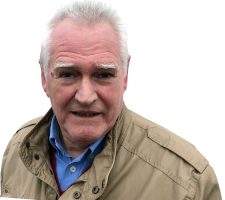

Mike Tilling, Arts Correspondent
Classical Music: Strauss Also Sprach Zarathustra & Debussy Jeux
Strauss Also sprach Zarathustra
Debussy Jeux
London Symphony Orchestra
François Xavier Roth (Conductor)
LSO Live LSO0833
www.lsolive.co.uk
Debussy Jeux
London Symphony Orchestra
François Xavier Roth (Conductor)
LSO Live LSO0833
www.lsolive.co.uk
.jpg)
Aaron Copeland’s Fanfare for the Common Man has suffered a similar undignified fate. Of course, great works of art can not be diminished in this way.
Conductor, François Xavier Roth’s solution to the bombast and triumphalism of those opening notes is to treat them just like any other part of the whole. He makes no attempt to foreground them except as what they are – an introduction.
Even though there are nine sections, there are only three pauses. Each section has its own, unique identity. The titles are taken from chapter headings in Friedrich Nietzsche’s novel of the same name. The sequence runs from Sunrise (Sonnenaufgang) to Song of the Night Wanderer (Das Nachtwanderlied).
The original specification for the score lists a huge number of players. I suspect that contemporary interpretations are more modest for reasons of both economy and focus.
The second section, From the Underworld (Vor den Hinterweltern) shows us Strauss at his darkest. If we are to take Strauss at his word, and see this as a tone poem, then a thief skulks in the shadows, waiting for a victim. Strauss then moves to his most Wagnerian despite a light and airy introduction. Respect must be accorded to the orchestra here as they move effortlessly between these contrasting moods.
Progressing through the piece, we come to the Dance Song (Das Tanzlied). Perhaps the most attractive of the sections, one wonders if the waltz rhythms are a reference to the composer’s namesakes. However, the most captivating feature is the violin solos that punctuate the orchestral elements. Presumably, the player is Ramon Simovic, the Leader of the orchestra, but I can find no explicit credit.
The piece that fills out the CD, though it is not a make-weight, is Debussy’s Jeux Poeme Danse, an orchestral version of the ballet score that Debussy wrote for Diaghilev in 1913. At times it sounds as though it could be another section of the Strauss piece.
It plays with differing sound representations perhaps our differing perceptions of water as it runs over stones in a brook or crashes against rocks at the foot of a cliff. There were problems with the ballet, but they were resolved when Diaghilev doubled Debussy’s fee.
As you would expect of music from an orchestra that is routinely named in the top five in the world, this is superb playing. Recording quality reflects the excellence of the musicianship.
Coming at the end of the Nineteenth Century (1896) Strauss’s tone poem looks back to the high romanticism of Nietzsche and suggests ways forward for music in the Twentieth.
The challenge for us now is to listen without seeing images of an ape throwing a bone into the air.